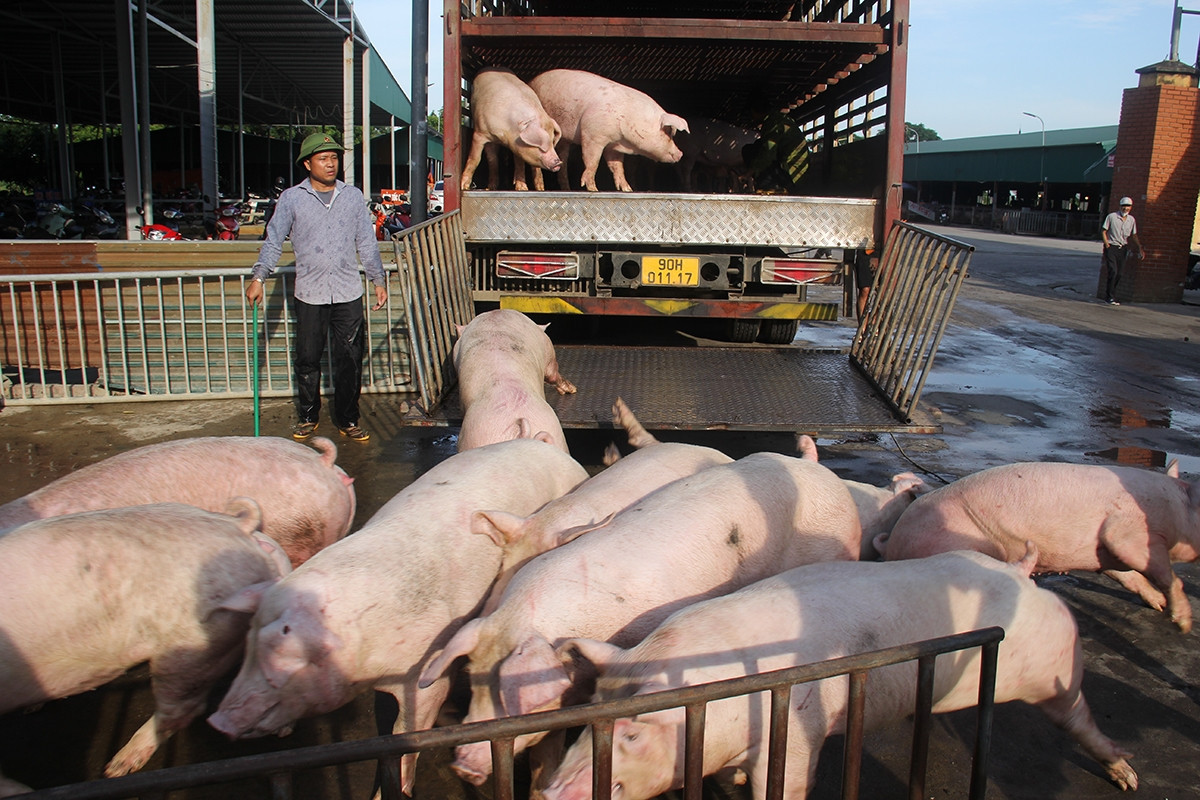
Hoang Van Chung in Tuyen Quang province told VietNamNet that he has sell pigs at a loss at VND50,000 per kilogram.
Chung is well known in Vietnam as he was honored as a Vietnamese ‘excellent farmer’ with a large-scale pig farm (2,000 pigs). However, he said he has become exhausted over the last seven years and tired of farming because of so many problems.
In 2017, the pig farm faced an oversupply crisis, which forced pig prices down to VND16,000 per kilogram of live weight. He called this a ‘price storm’ which made him suffer heavily.
Chung and his wife then fell into a crisis, especially when debts to maintain the herd of pigs totaled VND3.2 billion. They estimated that even if they sold all the pigs, the farms and the home, they would not be able to pay the debts.
At that time, bran sellers, to whom he owed money, demanded payment of the debts and refused to sell more bran to him. Meanwhile, his pigs still needed food every day.
Finally, the ‘price storm’ was over and pork prices increased again. However, the happy days of Chung and his wife did not last a long time. Pig farms throughout the country were attacked by foot-and-mouth disease and African swine fever (ASF). Later, the Covid-19 pandemic broke out, dealing another strong blow to Chung and other farmers.
In 2021, he took a big loss because of ASF and had to suspend farming. In early 2022, Chung gathered all the money he had to resume farming. But unfortunately, he had to struggle with ‘dual price storms’ as animal feed prices reached the highest peak in history, while pig prices decreased.
In early 2023, he sold pigs at VND43,000-47,000 per kilogram in live weight. With the selling price, he incurred big losses.
Later, the pig prices bounced back, but he still could not sell any pigs before the pig prices dropped once again.
“The selling price has fallen to below VND50,000 per kilogram and ASF recurred. Farmers like us are always put on tenterhooks,” he complained.
After seven years, Chung’s farming scale has been halved, from 2,000 pigs to less than 1,000. Since he is running large-scale farming, he still could exist, but he has mortgaged his land-use right certificates at banks for several billions of dong worth of loans, and the future is unclear.
Chung is just one of millions of pig farming households in Vietnam who have had to struggle for many years to survive oversupplies, price storms and epidemics.
Another recent problem: more and more official pork imports are arriving which are cheaper than domestic pigs. Meanwhile, smuggled pigs and poultry are threatening pig farming.
Experts note that animal husbandry has never before faced such difficulties. Farmers are having to struggle to avoid losses and fight epidemics.
According to Dong Nai Livestock Association head Nguyen Tri Cong, farmers want to borrow money from banks, but they cannot access official sources of capital. Farmers have to borrow money at exorbitant prices to buy bran to keep the pigs alive.
Cong cited reports to prove that the farming has been scaling down in the last few years. Ten years ago, Vietnam had 10 million farming households.
The figure dropped to 4 million 3 years ago, and now there are less than 2 million households which still farm pigs. This means that 8 million households have had to leave the market.
Cong has called on commercial banks to ease lending interest rates and extend preferential loan packages. Otherwise, farmers will go bankrupt.
Farming associations have proposed that state management agencies apply drastic measures to prevent smuggling, and tighten control over full-tax imports, and reduce the import tariff on animal feed to protect the livelihood of millions of farming households.
They have also called on businesspeople to keep the bran prices stable, stressing that the high feed prices will cause farmers to go bankrupt and this will adversely affect animal feed producers, who are in the same ecosystem with farmers.
Tam An